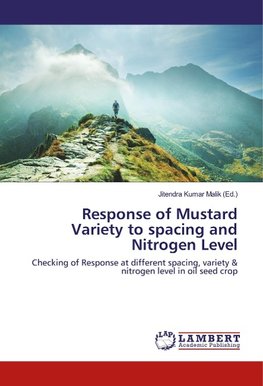
-
 Anglický jazyk
Anglický jazyk
Response of Mustard Variety to spacing and Nitrogen Level
Autor: Jitendra Kumar Malik
India is the third largest edible oil economy in the world after USA and China. It occupies a distinct position not only in terms of area under oilseeds but also in terms of diversity in cultivated oilseeds. It is blessed with agroecological condition favourable... Viac o knihe
Na objednávku, dodanie 2-4 týždne
46.17 €
bežná cena: 51.30 €
O knihe
India is the third largest edible oil economy in the world after USA and China. It occupies a distinct position not only in terms of area under oilseeds but also in terms of diversity in cultivated oilseeds. It is blessed with agroecological condition favourable for growing nine major oilseeds including seven edible 'oilseeds groundnut, rapeseed-mustard, soybean, sunflower, safflower, sesame, niger and two non-edible sources namely castor and linseed apart from a wide range of other minor oilseeds and oil bearing tree species. Indian agrarian economy sharing 14% of the gross cropped area accounting for nearly 5% and 10% of the value of all agricultural products (Mandal et al., 2002). In India the oilseed production increased from a mere 10.83 million tonnes in 1985-1986 to 20.5 million tonnes in 2001-02 (Anon., 2003). Credit goes to the Technological Mission on Oilseed (TMO) set up by Government of India in 1986 for bringing out the so called 'yellow revolution' in oilseed production in India. The productivity of oilseeds in India is still low 935 kg/ha as compared to 1,632 kg/ha (Damodaran and Hegde, 1999).
- Vydavateľstvo: LAP LAMBERT Academic Publishing
- Rok vydania: 2017
- Formát: Paperback
- Rozmer: 220 x 150 mm
- Jazyk: Anglický jazyk
- ISBN: 9786202004077

 Nemecký jazyk
Nemecký jazyk 









